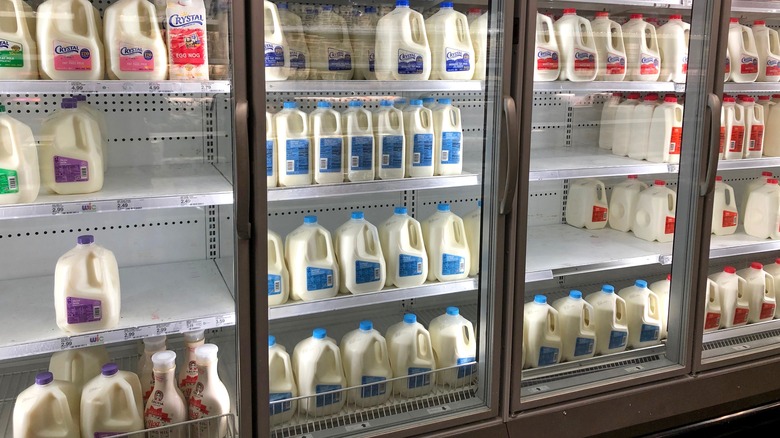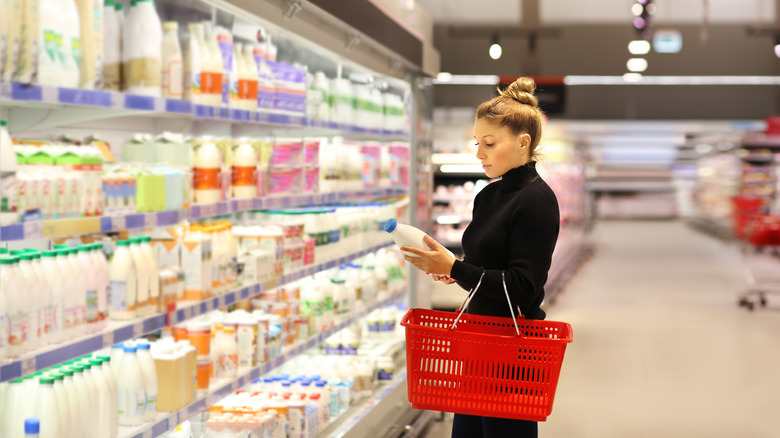Why Is Milk Always At The Back Of The Grocery Store?
If you've gone to the nearest grocery store to purchase only a carton of milk, you might have noticed that the milk section is placed at an inconvenient location in the back of the store. So much for dashing in for a quick gallon. Before you've realized what you're doing, you've picked up bouquet of flowers, contemplated the many varieties located on the snack aisle, and added a few other odds and ends to your cart that you never intended to pick up in the first place.
It turns out that there are a few reasons why that quick grocery store run is adding extra steps to your fitness tracker. Paco Underhill, the author of "Why We Buy: The Science of Shopping," notes that this isn't a random occurrence, but strategy by design (via My Recipes). Whether you're searching for milk or a dairy alternative, are grocery stores trying to trick you into reaching for more than just what you were intending to purchase?
Conservation of resources
Clemson Cooperative Extension Home & Garden Information Center reports that milk must be kept around 40 degrees F in order to stay fresh and tasty. Farmers and manufacturers work in tandem to preserve a continuity of cold from farm to store according to registered dietician Jenna Allen. When chilled milk displays are placed near the store's delivery docks, shipments can be quickly stored and the likelihood of any milk carton spoiling is reduced. Additionally, the fanfare associated with removing expired cartons can occur quickly while extra inventory is easily retrieved.
If refrigerated displays were located in the front of stores, all of this stocking and adjusting could also interfere with shoppers who are trying to go about their errands. Additionally, the costs associated with labor and spoiled milk may impact the price of the milk itself theorizes economist Russ Roberts (via NPR). But are shoppers actually saving money by heading to the back of the store?
A matter of money
While some state that the placement of milk is to preserve freshness, the issue is still hotly debated. In an NPR interview, food writer Michael Pollan argues that common items like bread and milk are positioned as far apart as possible to force shoppers to cover more ground. As shoppers walk from one product to the next, they're tempted to purchase other items along the way.
According to the Houston Chronicle, grocery and food retailers have a profit margin between 1% to 3%, making it one of the least profitable businesses in the United States. So it is understandable that supermarkets are looking to maximize profits. Whether creating an online shopping experience or planning in-store displays, grocers strategize for impulse buys (via Progressive Grocer). In fact, according to Shopify, over 50% of all groceries sold is a result of impulse.
Career grocery leader Jeff Campbell, also known as The Grocery Store Guy, agrees: Whether coaxing shoppers down aisles or placing chocolates near check-out, a market's layout is intended to increase revenue. So the next time you're stopping in for milk, keep your grocery list firmly in hand.


